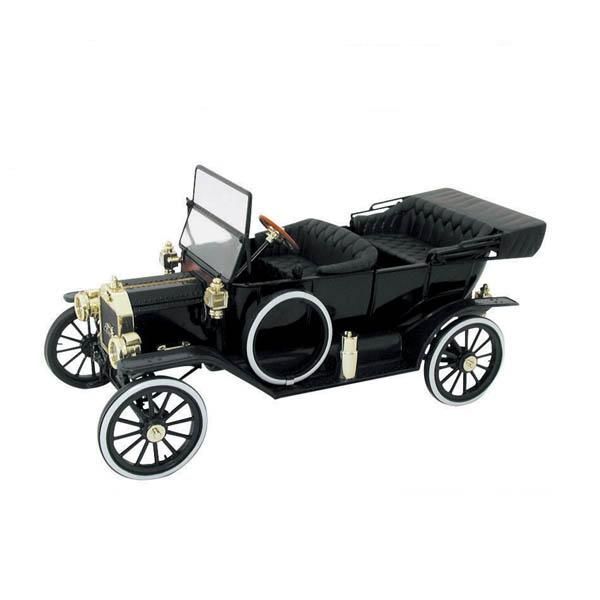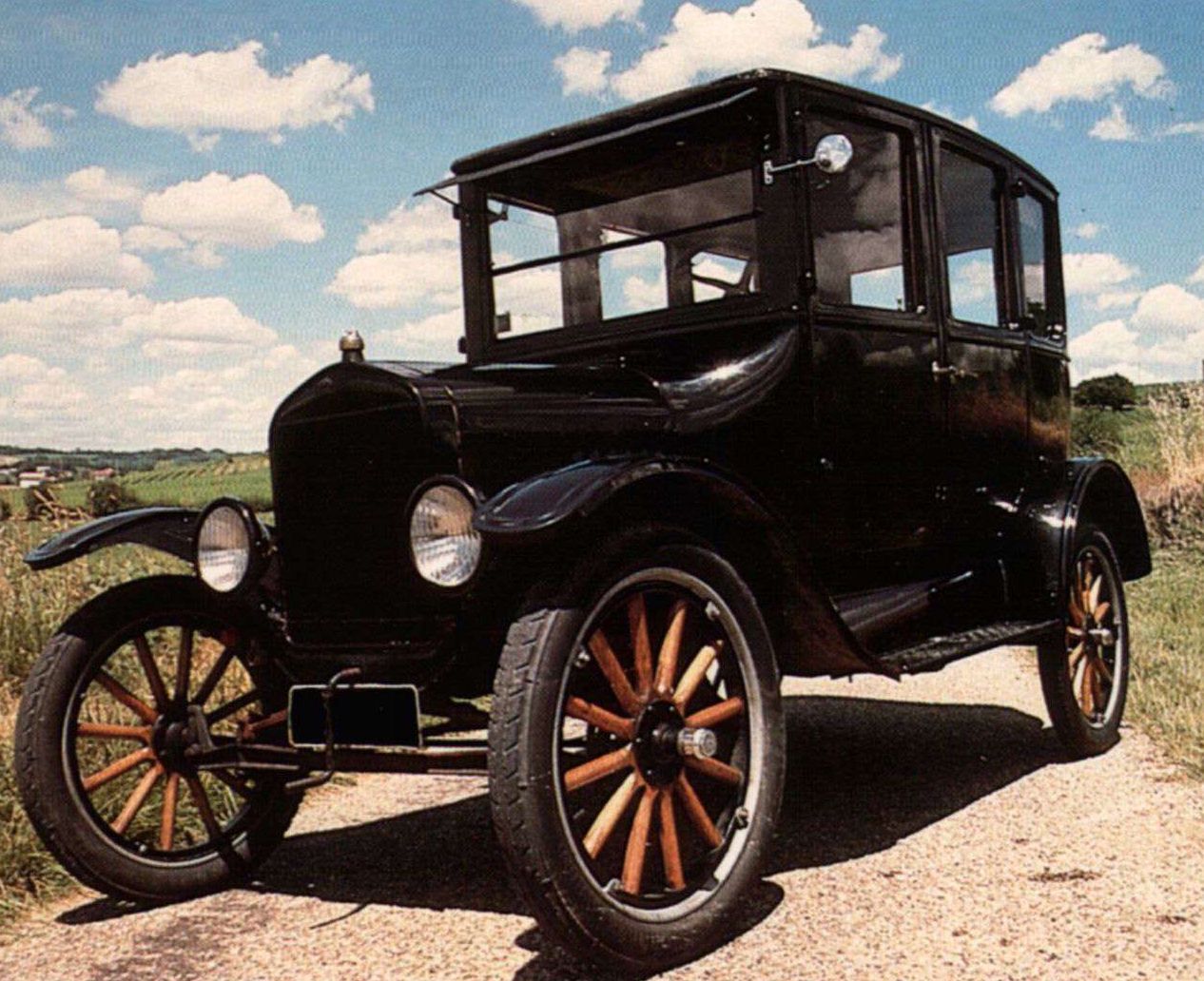The Ford Model T has an extensive history in the automotive market lasting for nearly 20 years. It is often called the 'Tin Lizzie' and the 'Flivver' and is credited with 'putting America on wheels.
1908 Ford Model T
- Make: Array
- Model: 1908 Ford Model T
- Engine/Motor: In-Line 4 Cylinder
- Horsepower: 20 @ 2000 RPM
- Transmission: Manual 2 speed
- [do not use] Vehicle Model: Array
History
Steam, electricity, and gasoline were the three means of powering the vehicles. Everyone was clueless regarding which of the above are the most favorable power-source. Steam was quite, clean and cheap. Gasoline or kerosene fuel was used to heat water in a boiler; the steam produced was channeled to the cylinders, where the pressure drives the pistons up and down. The shortcomings were that it took a while to start, having to wait for the steam to prepare. It was dangerous, often exploding and causing injury. It had a limited range, lasting about 20-40 miles before requiring a refueling. Electricity was popular but it too had a limited range. It was easy to start and was very popular with the ladies for driving around town. Gasoline on the other hand was dirty and hard to start but it had the most potential and an ever increasing amount of power.
Between 1920 and 1926 the Ford T00666 Passenger Car began its life on the assembly lines. It was practically the same car, but with a soft-top. It was one of the first convertibles affordable enough for everyone.
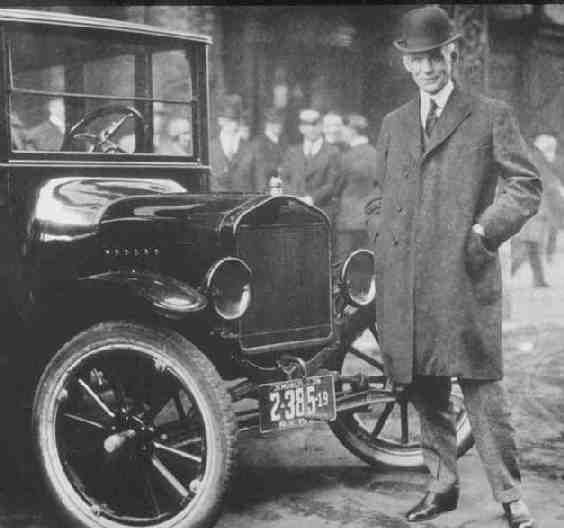
Engine & Mechanics
The Ford Model T started with a twist of a hand crank. But before you could turn it, the spark had to be retarded, just as safety measure – not to break your arm if the engine was to kick back. Most Model T Fords had the choke operated by a wire emerging from the bottom of the radiator where it could be operated with the left hand while cranking the engine with the right hand. Most cars sold after 1919 were equipped with electric starting.
If you look at it today, the Ford Model T could be a considered a high-risk automobile. The fuel tank was mounted just beneath the driver’s seat. A thin tin frame separated 10 gallons of gasoline and the driver. There also was a model that had modified a carburetor to run specifically on ethyl alcohol (which could easily be made at home by the self-reliant farmer).
As physics show us, fuel relied on gravity to flow forward from the fuel tank to the carburetor. Therefore a Ford Model T could never have climbed a steep hill if the fuel level was to low. Solution was to climb the hills in reverse. Later on in 1926 engineers decided to move the fuel tank under the cowl on most of the models.
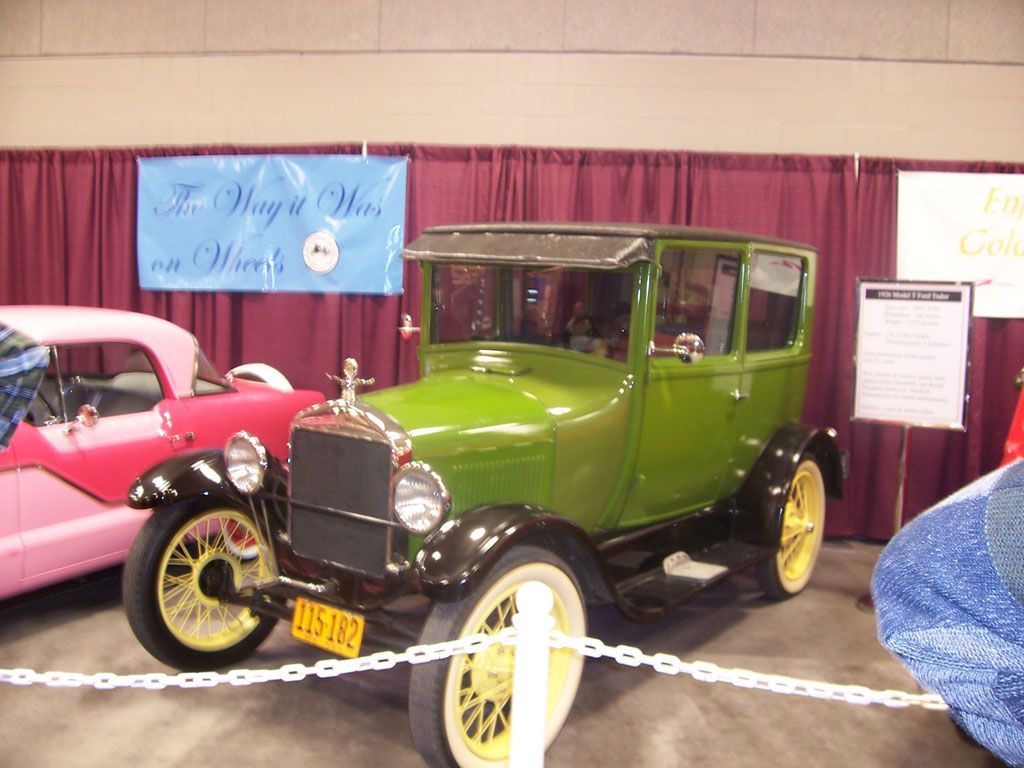
Suspensions, Brakes and Wheels
Model T suspension employed a transversely mounted semi-elliptical spring for each of the front and rear axles, which were "live”. Just like most of the car parts, the front axel was forged as a single piece of vanadium steel.
Model T did not have a modern service brake. The right foot pedal applied a band around a drum in the transmission, thus stopping the rear wheels from turning. The previously mentioned parking brake lever operated band brakes on the outside of the rear brake drums
Wheels were wooden artillery wheels, with steel welded-spoke (not truly wire) wheels available in 1926 and 27 from Ford. Tires were pneumatic 30 inches in diameter, 3.5 inches wide in the rear, 3 inches in the front. The old nomenclature for tire size changed from 30X3 to 21" (rim diameter) X 4.50 (tire width). Wheelbase was 99 inches; while standard tread width was 56 inches, 60 inch tread could be obtained on special order, "for Southern roads".
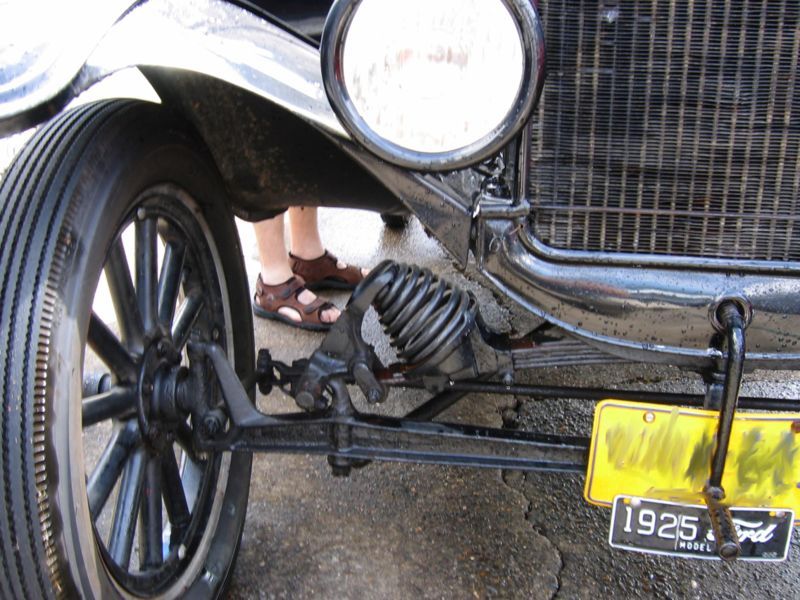
Conclusion
Ultimately, this combination of efficiency and high wages led to the fulfillment of Ford's prediction. The Model T was, indeed, a motor car for the masses. Not only was it cheap, but thanks in part to Ford's wage scales, ordinary workers for the first time had the disposable income necessary to purchase one. With the Model T, the automobile, which had once been an expensive plaything for the wealthy, began its transformation into an everyday necessity.

